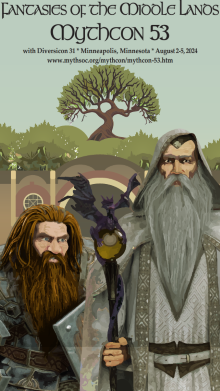Loading...
Event Website
Start Date
2-5-2022 2:30 PM
Description
In her introduction to Reading in the Dark: Horror in Children’s Literature and Culture, Jessica R. McCort defines horror for children and young adults as a hybrid genre, one having its roots in both the gothic and the nineteenth-century fairy tale. She explains that the exploration of dark forces in children’s books is often not limited to those tropes traditionally associated with the horror genre for adults: “Think of the books that are considered children’s classics. The best of them contain dark forces of one kind or another, as well as internal battles between the light and the dark: (21). C. S. Lewis’s Narniad makes liberal use of such dark forces. The series includes conventional characters from the horror genre such as bats and a werewolf, while the White Witch, Uncle Andrew, the Green Lady, and the giants of Harfang either represent or embody the monstrous. Lewis’s distinction between real life and imaginative fear is, in part, a response to the impact of such dark forces: “in imagination, where the fear does not rise to abject terror and is not discharged in action, the qualitative difference is much stronger” (9). The Narnia Chronicles rarely allow for an unmediated experience of such imaginative fear. I want to argue that Lewis incorporates elements of horror throughout the Narniad while regularly intervening on behalf of his child reader at moments of heightened intensity, mediating such moments in such a way as to both shield his child reader and undercut the imaginative impact of such elements.
Creative Commons License

This work is licensed under a Creative Commons Attribution-NonCommercial-No Derivative Works 4.0 International License.
Included in
Children's and Young Adult Literature Commons, Comparative Literature Commons, Digital Humanities Commons, European Languages and Societies Commons, Literature in English, Anglophone outside British Isles and North America Commons, Literature in English, British Isles Commons, Literature in English, North America, Ethnic and Cultural Minority Commons, Medieval Studies Commons, Modern Languages Commons, Modern Literature Commons, Other English Language and Literature Commons
The Story, the Narrator and the Reader: Mediated Horror in C.S. Lewis’s Narniad
In her introduction to Reading in the Dark: Horror in Children’s Literature and Culture, Jessica R. McCort defines horror for children and young adults as a hybrid genre, one having its roots in both the gothic and the nineteenth-century fairy tale. She explains that the exploration of dark forces in children’s books is often not limited to those tropes traditionally associated with the horror genre for adults: “Think of the books that are considered children’s classics. The best of them contain dark forces of one kind or another, as well as internal battles between the light and the dark: (21). C. S. Lewis’s Narniad makes liberal use of such dark forces. The series includes conventional characters from the horror genre such as bats and a werewolf, while the White Witch, Uncle Andrew, the Green Lady, and the giants of Harfang either represent or embody the monstrous. Lewis’s distinction between real life and imaginative fear is, in part, a response to the impact of such dark forces: “in imagination, where the fear does not rise to abject terror and is not discharged in action, the qualitative difference is much stronger” (9). The Narnia Chronicles rarely allow for an unmediated experience of such imaginative fear. I want to argue that Lewis incorporates elements of horror throughout the Narniad while regularly intervening on behalf of his child reader at moments of heightened intensity, mediating such moments in such a way as to both shield his child reader and undercut the imaginative impact of such elements.



Comments
Host: Denise Landrum-Geyer
Tech Mod: Ben Dressler
William Thompson is an associate professor at MacEwan University in Edmonton, Canada. He regularly teaches courses in children’s literature and science fiction. He has written articles on L. M. Montgomery and J. K. Rowling, and his latest piece, “Of Dying Gods and Lamp-Posts: Repositioning C. S. Lewis’s Narniad for the Twenty-First Century,” appeared as a chapter in The Inklings and Culture: A Harvest of Scholarship from the Inklings Society of Canada.